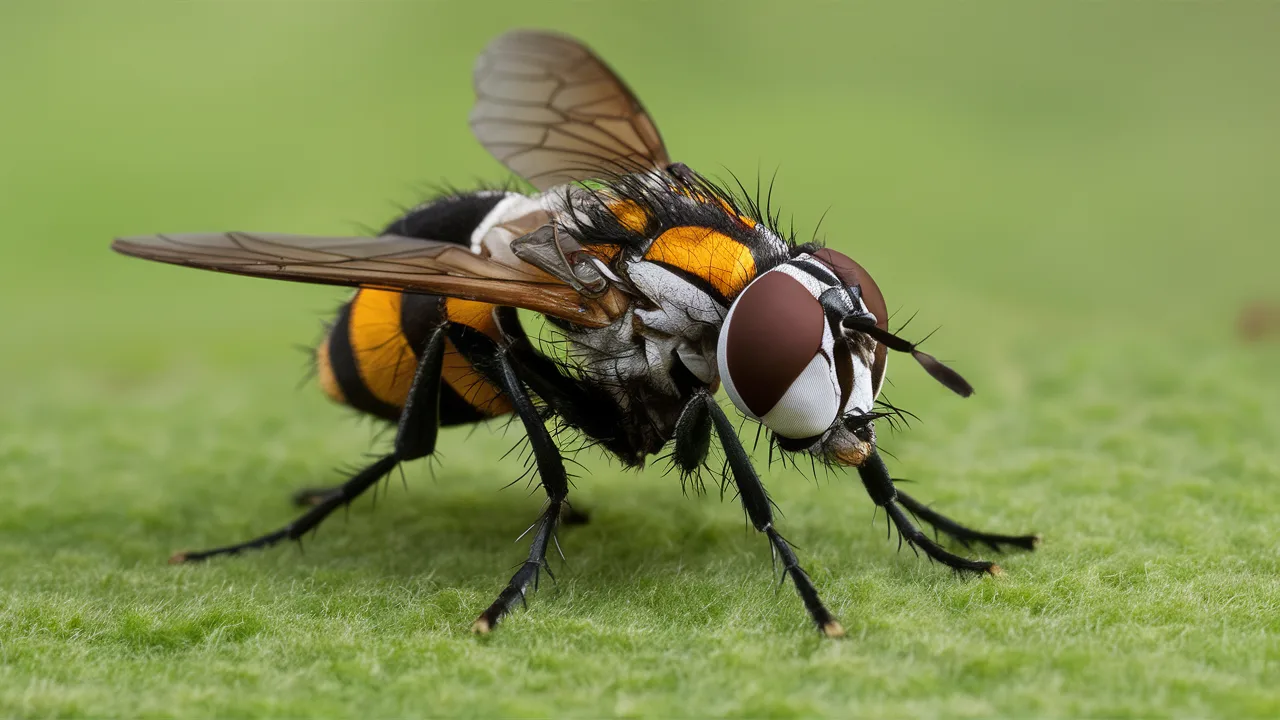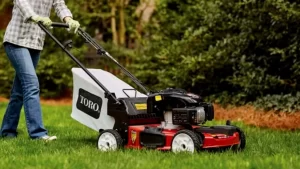Flies can be a nuisance, especially in outdoor spaces where you want to relax and enjoy nature. Fortunately, there are numerous DIY solutions to help you manage these pesky insects. Here’s an in-depth guide to 17 effective DIY fly traps that can be made using simple household items.
1. The Classic Bottle Fly Trap
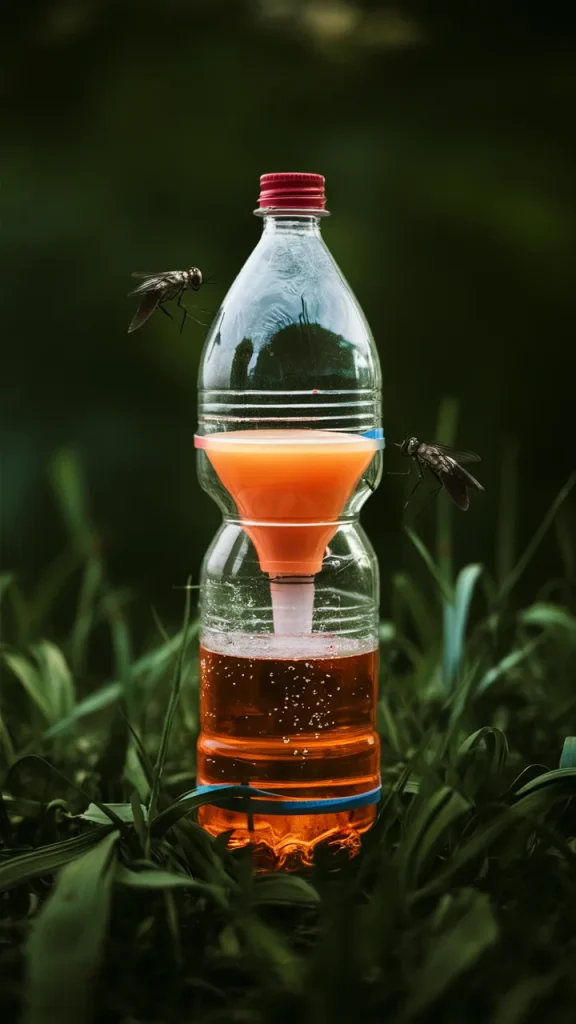
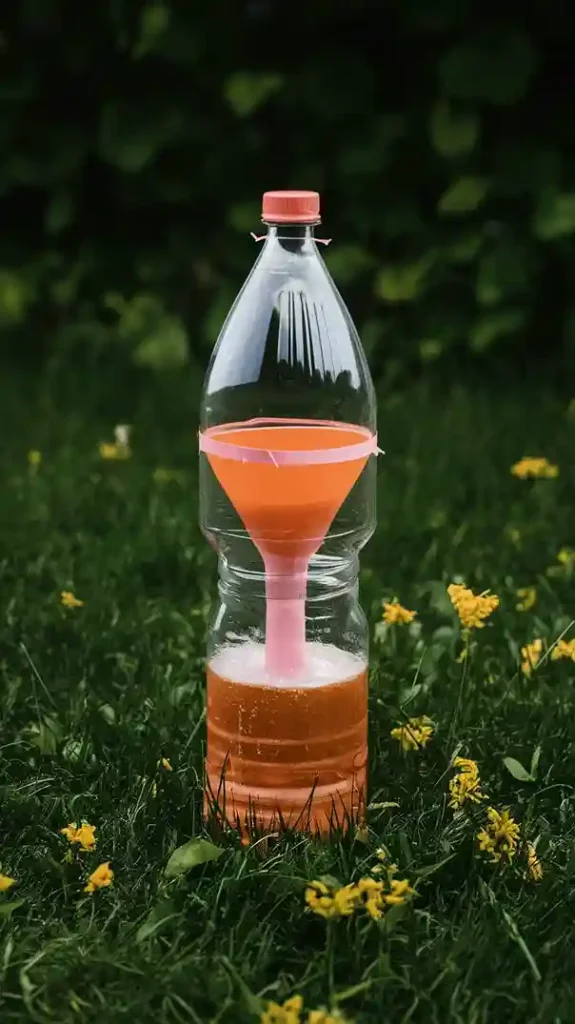
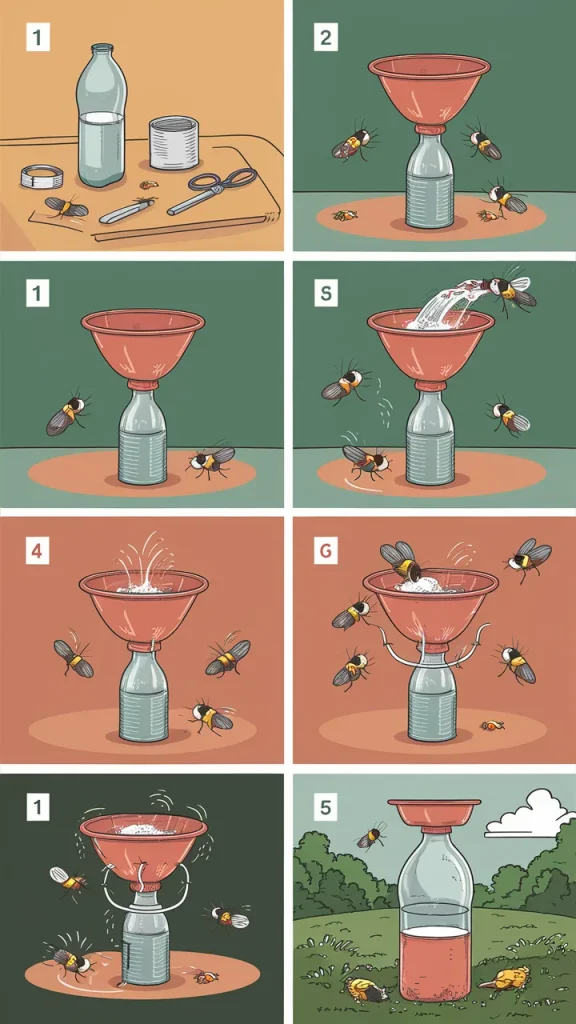
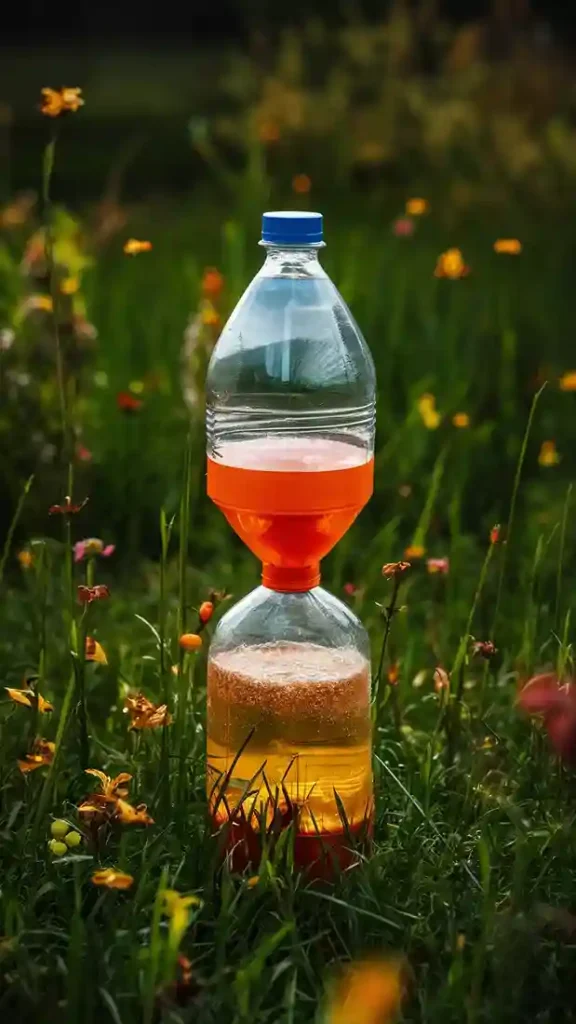
Materials Needed:
- Plastic bottle
- Scissors
- Tape
- Sugar water or fruit juice
Instructions:
Take a plastic bottle and cut off the top third. Invert the cut piece to create a funnel and place it back into the bottle’s base, securing it with tape. Fill the bottom with a mixture of sugar water or fruit juice to attract flies. The flies will enter through the funnel but will struggle to find their way out, eventually drowning in the liquid.
Why It Works:
Flies are attracted to sweet smells and will enter the bottle seeking the sugary solution. The funnel shape makes it difficult for them to escape, effectively trapping them. This simple trap is highly effective and can be made in minutes using items you likely already have at home.
2. Apple Cider Vinegar and Plastic Wrap Trap
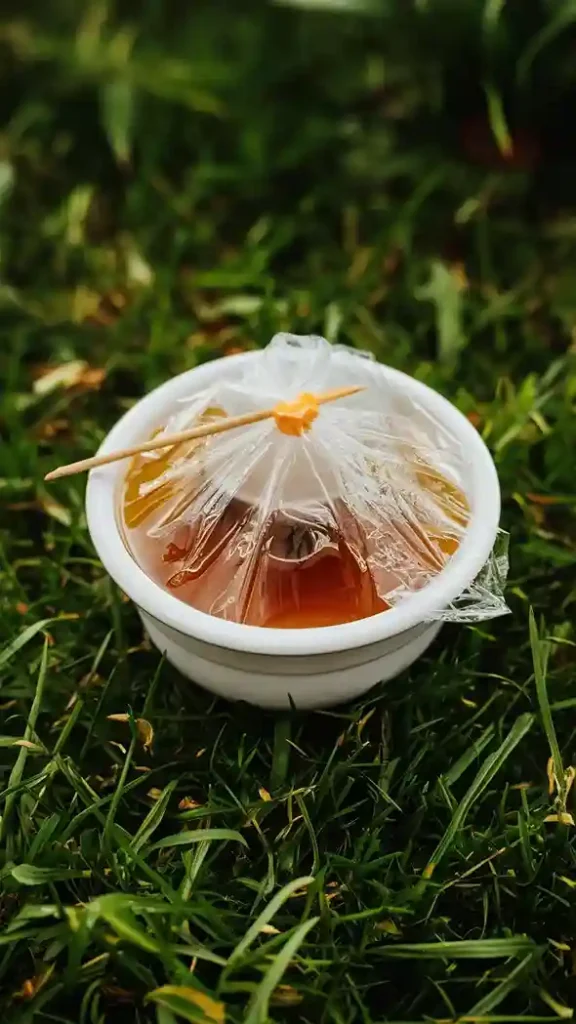
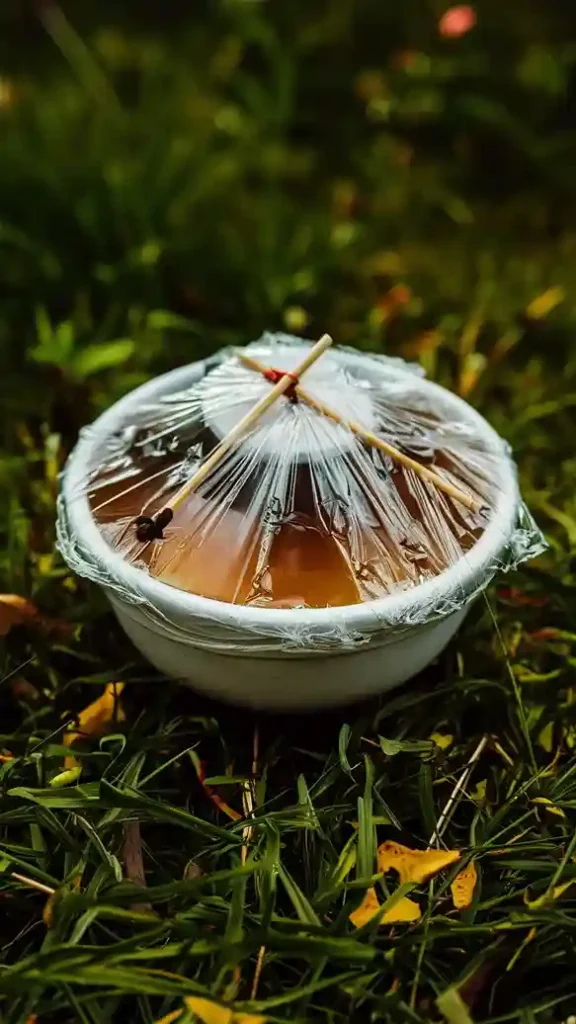
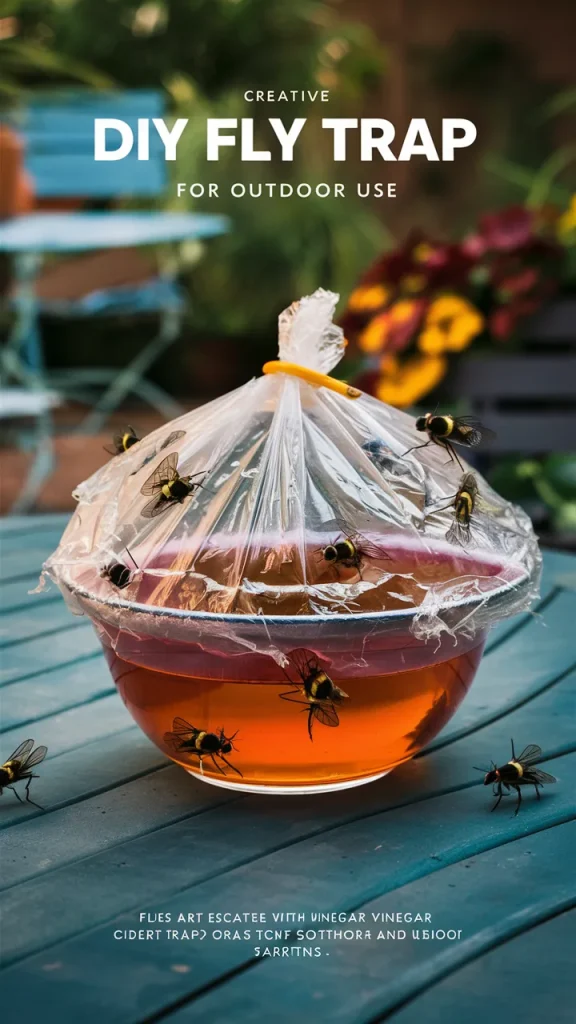
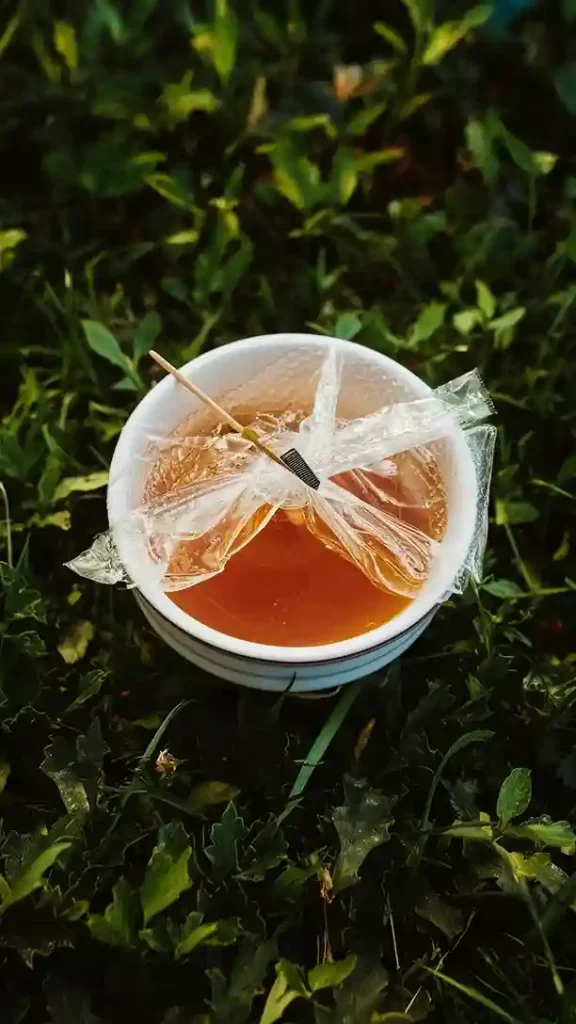
Materials Needed:
- Small bowl
- Apple cider vinegar
- Plastic wrap
- Rubber band
- Toothpick
Instructions:
Pour a generous amount of apple cider vinegar into a small bowl. Cover the bowl tightly with plastic wrap and secure it with a rubber band. Use a toothpick to poke small holes in the plastic wrap. Flies will be attracted to the vinegar, enter through the holes, and become trapped.
Why It Works:
The strong scent of apple cider vinegar draws flies in, and the plastic wrap acts as a barrier, preventing them from escaping. This method is particularly effective for smaller flies and gnats, making it a versatile option for various outdoor settings.
3. Fruit Trap
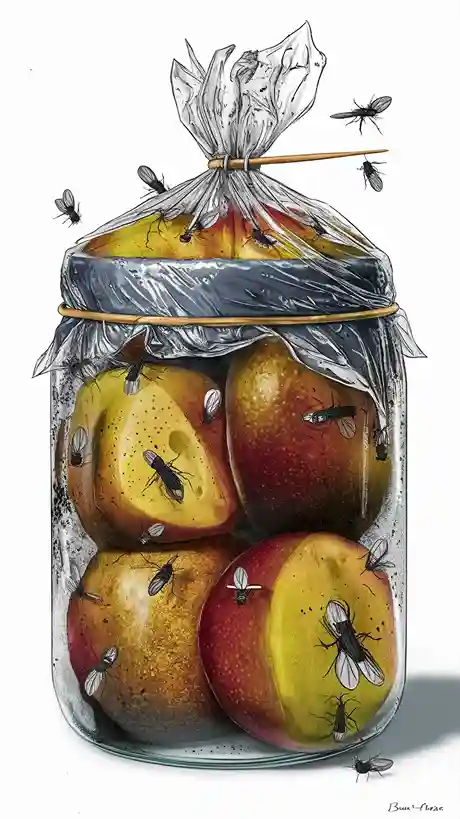
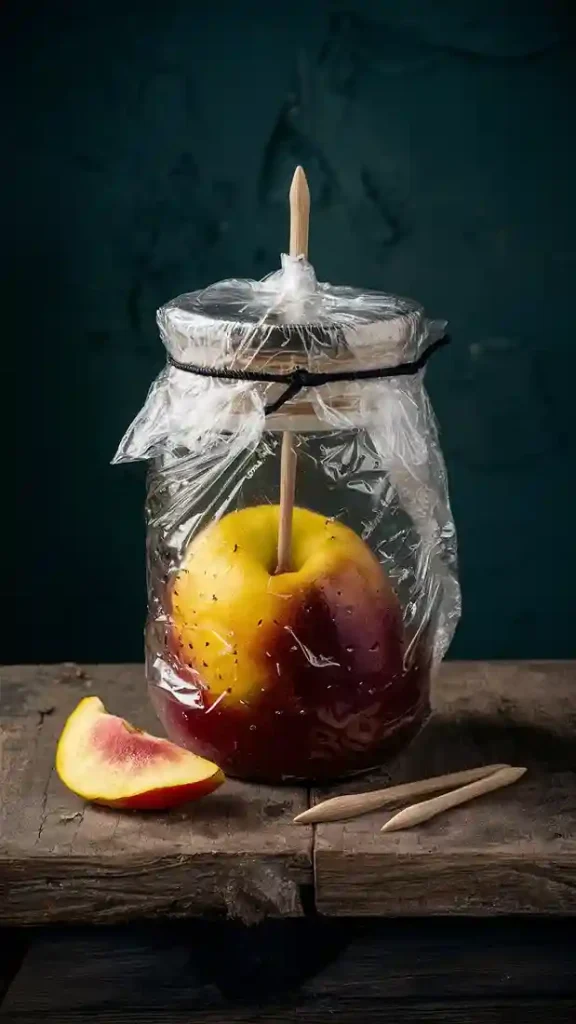
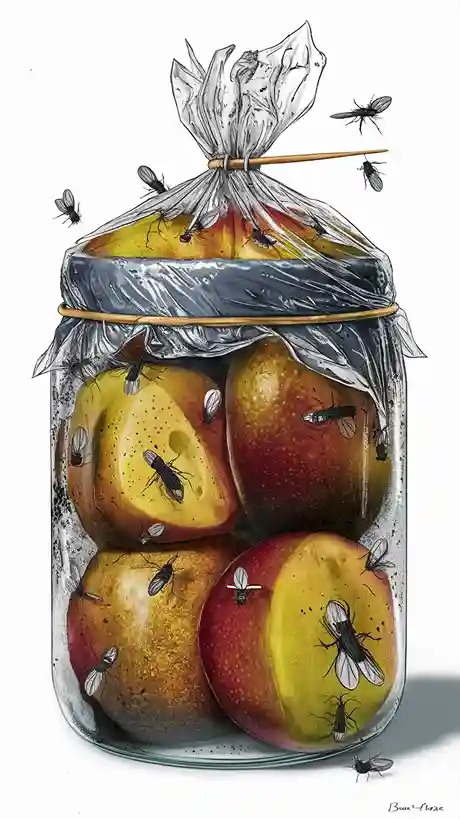
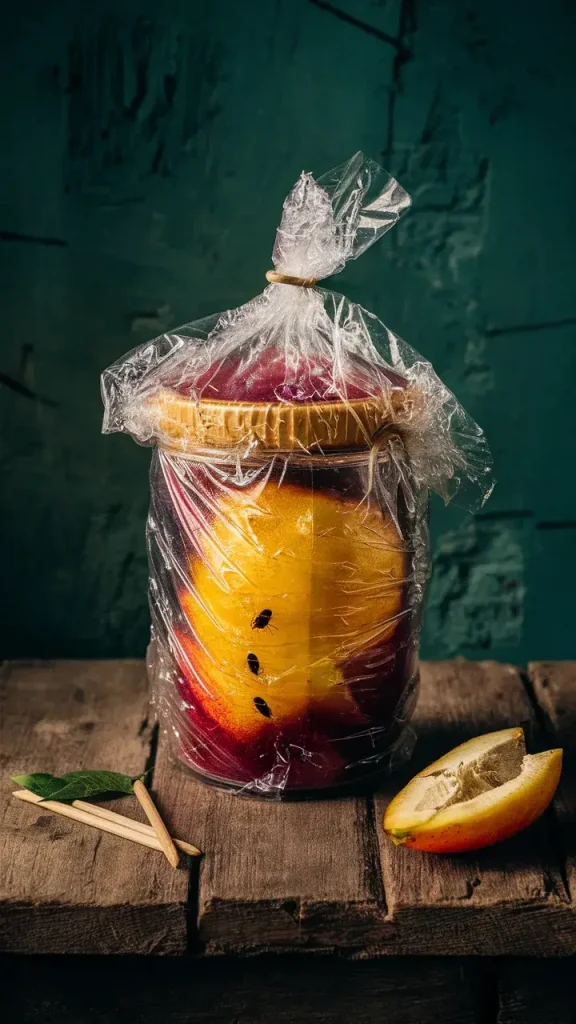
Materials Needed:
- Overripe fruit
- Jar
- Plastic wrap
- Rubber band
- Toothpick
Instructions:
Place a piece of overripe fruit in a jar. Cover the jar with plastic wrap, secure it with a rubber band, and poke small holes in the plastic with a toothpick. The flies will be attracted to the fruit, enter the jar, and get trapped.
Why It Works:
Overripe fruit emits a strong fragrance that is irresistible to flies. Once they enter the jar, the plastic wrap traps them inside. This trap is not only effective but also an excellent way to repurpose fruit that would otherwise go to waste.
4. Homemade Fly Paper
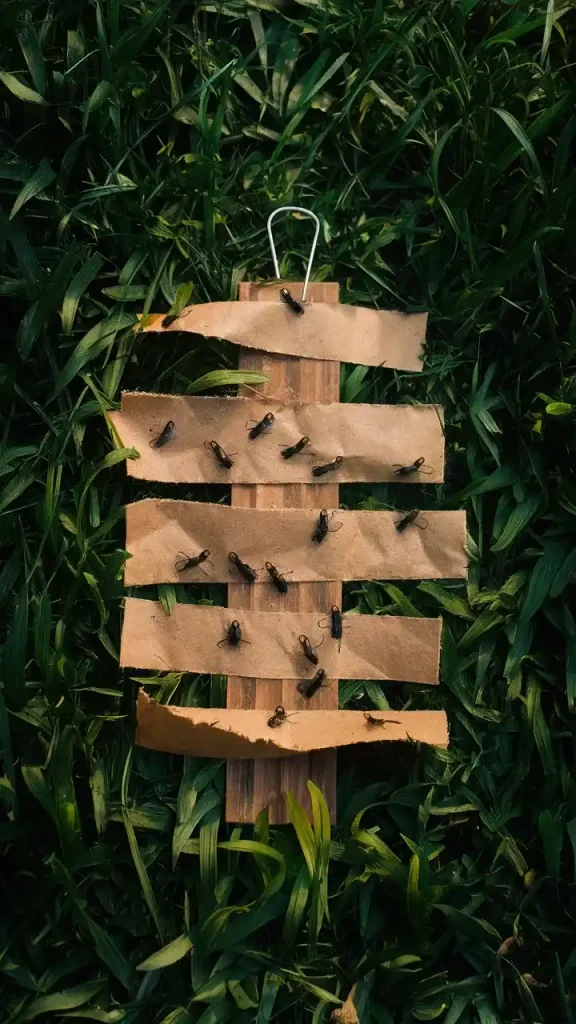
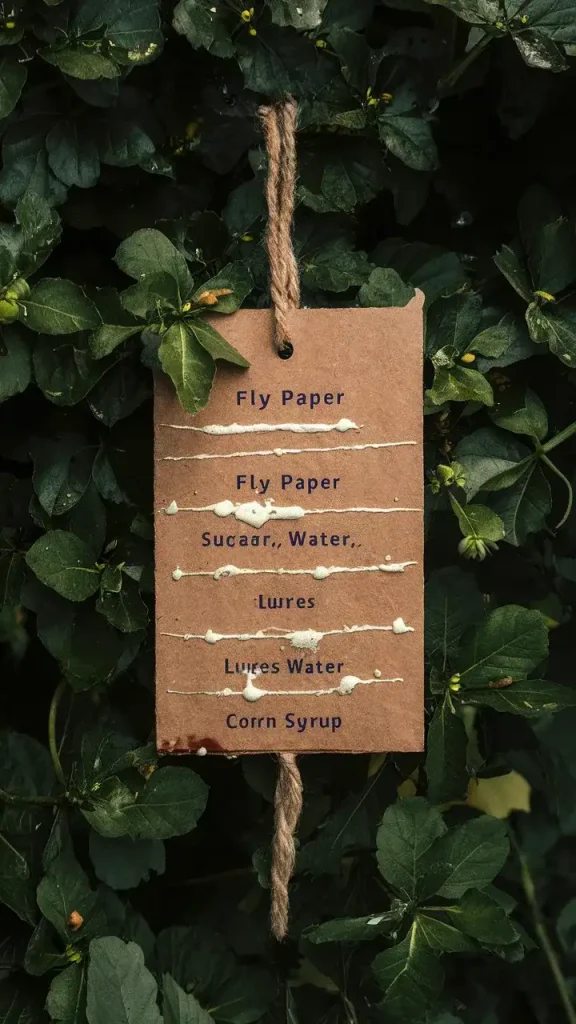
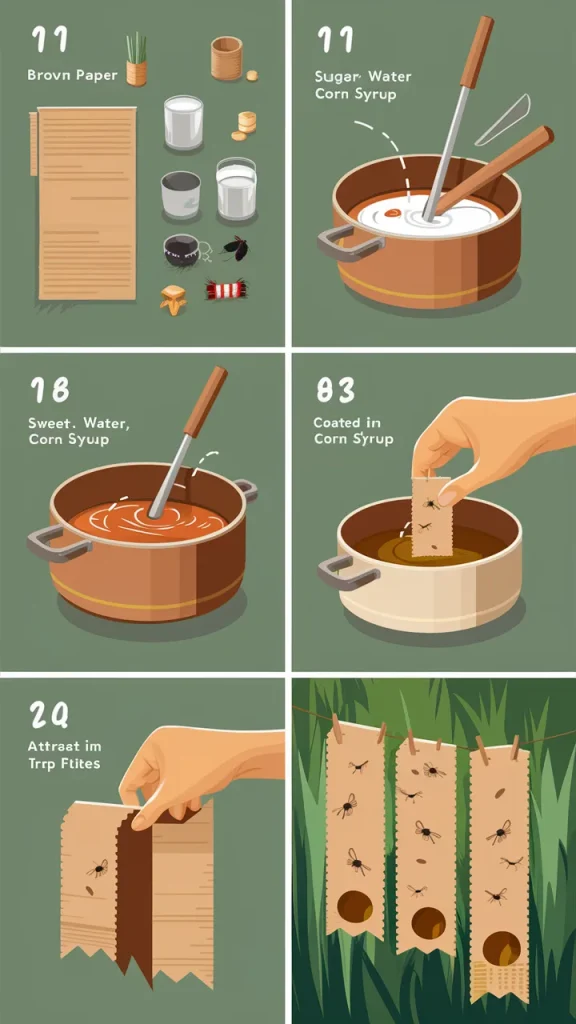
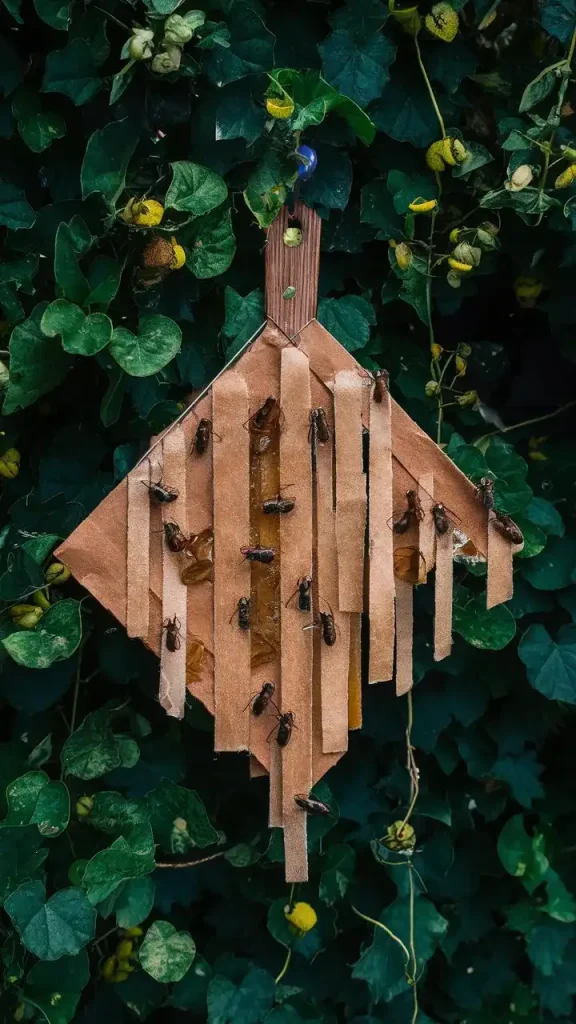
Materials Needed:
- Brown paper or cardstock
- Sugar
- Water
- Corn syrup
Instructions:
Cut brown paper or cardstock into strips. Mix equal parts sugar, water, and corn syrup in a pot and heat until dissolved. Dip the paper strips into the mixture, coating them thoroughly. Hang the strips outside to attract and trap flies.
Why It Works:
The sticky surface of the fly paper, combined with the sweet scent of the sugar mixture, lures flies and traps them upon contact. This method is effective and inexpensive, making it a practical solution for outdoor fly control.
5. Milk, Sugar, and Pepper Trap
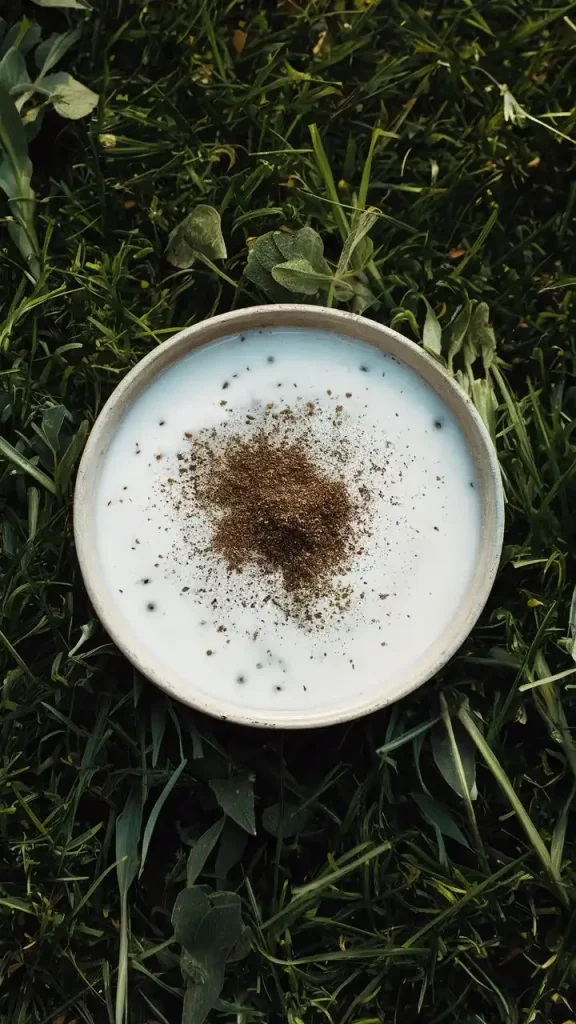
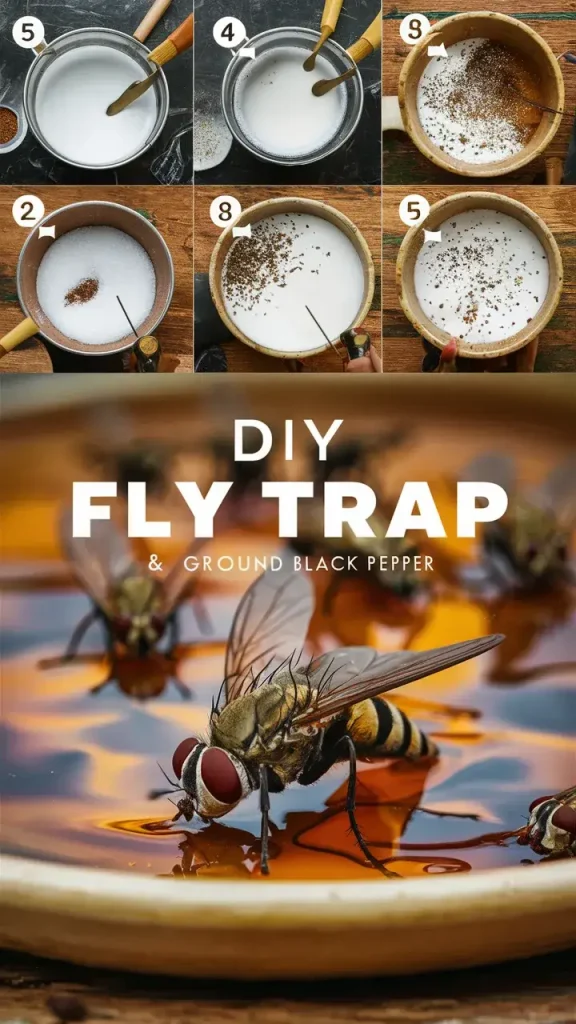
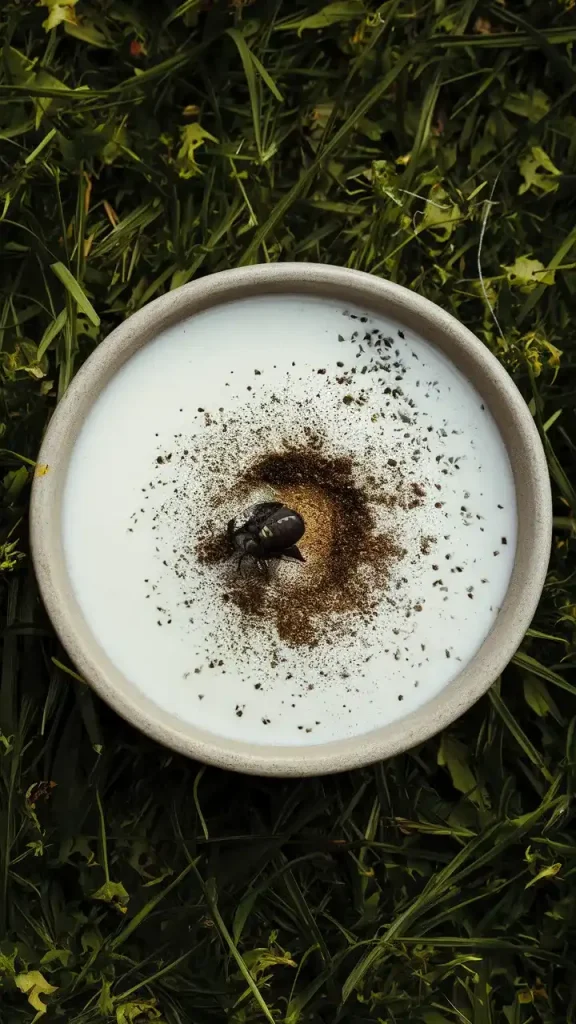
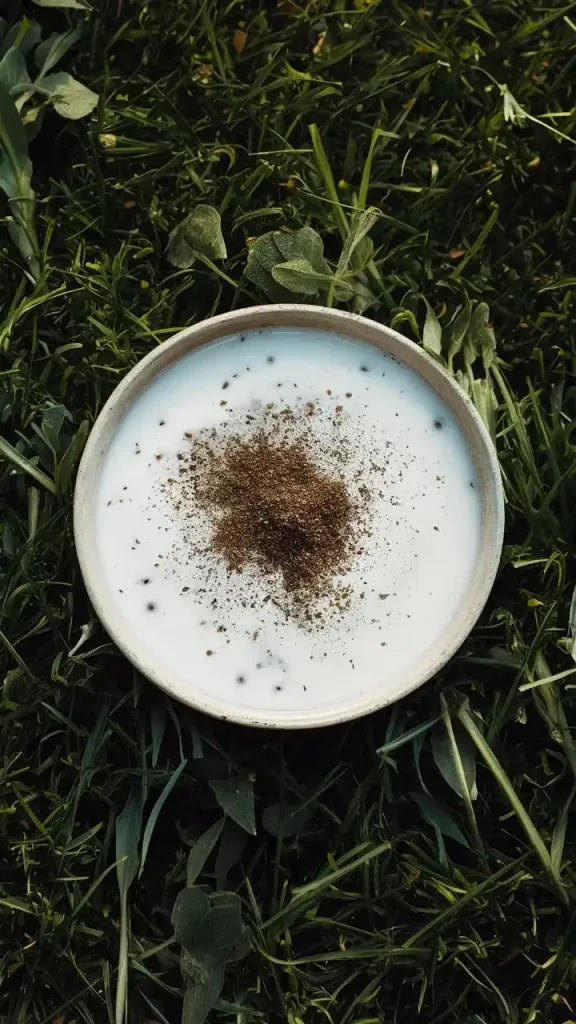
Materials Needed:
- Milk
- Sugar
- Ground black pepper
- Shallow dish
Instructions:
Mix 1 cup of milk with 3 tablespoons of sugar and 1 tablespoon of ground black pepper. Pour the mixture into a shallow dish and place it outside. Flies will be attracted to the sweet and spicy mixture and drown in it.
Why It Works:
This trap combines the sweet allure of sugar with the unexpected kick of black pepper. The milk enhances the attractiveness, making this concoction irresistible to flies. The shallow dish design ensures that flies easily come into contact with the liquid and drown.
6. Wine Bottle Trap
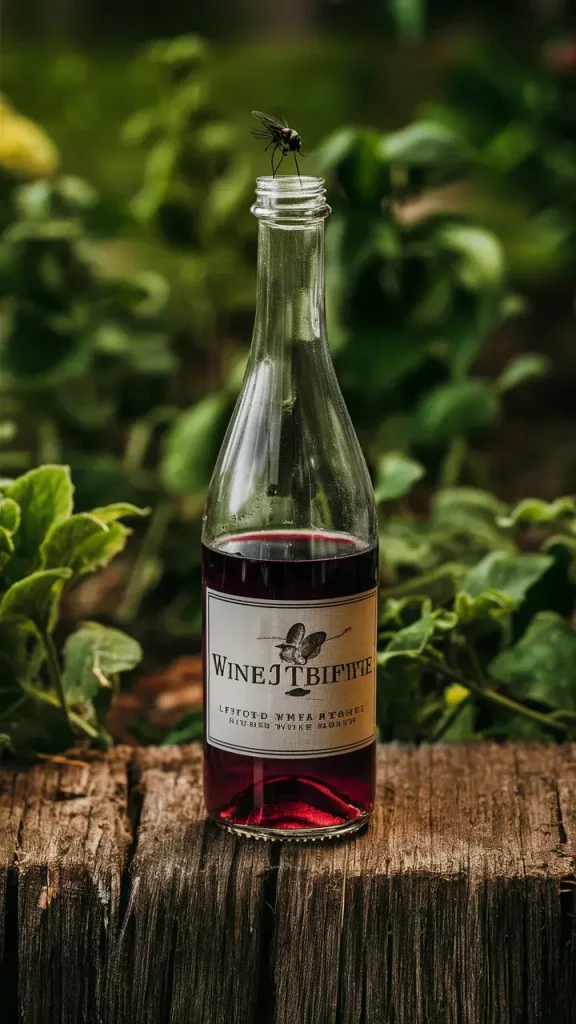
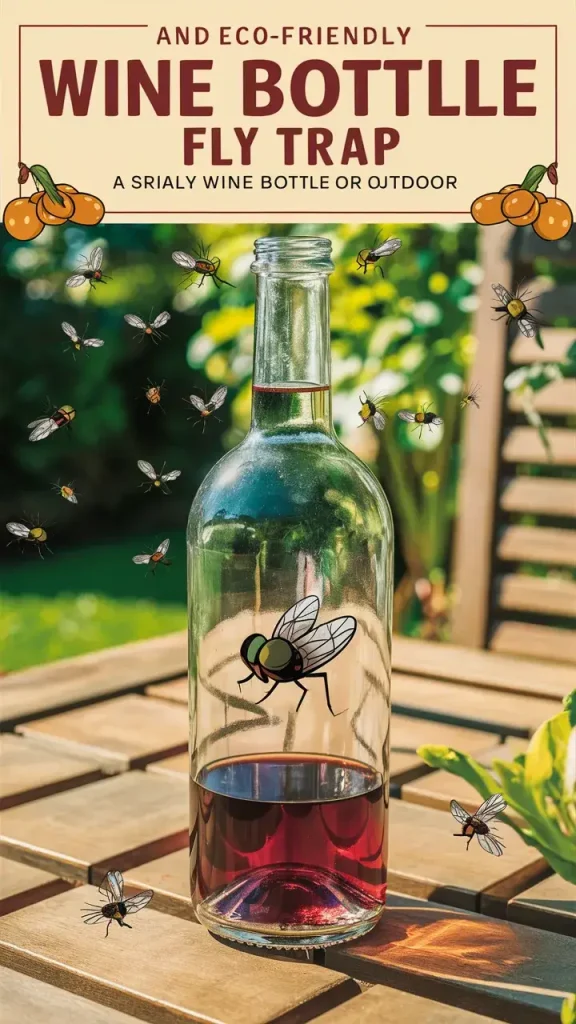
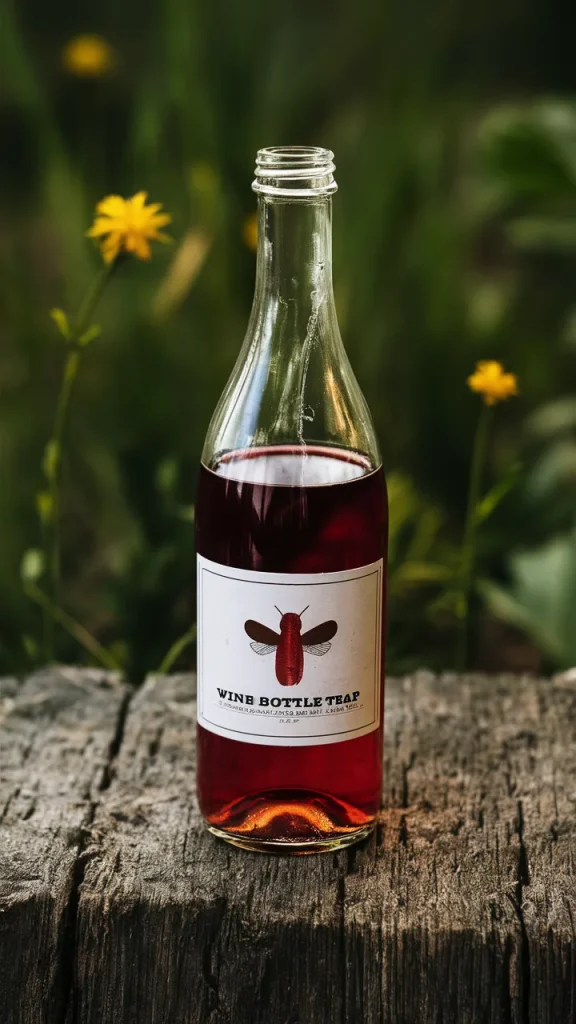
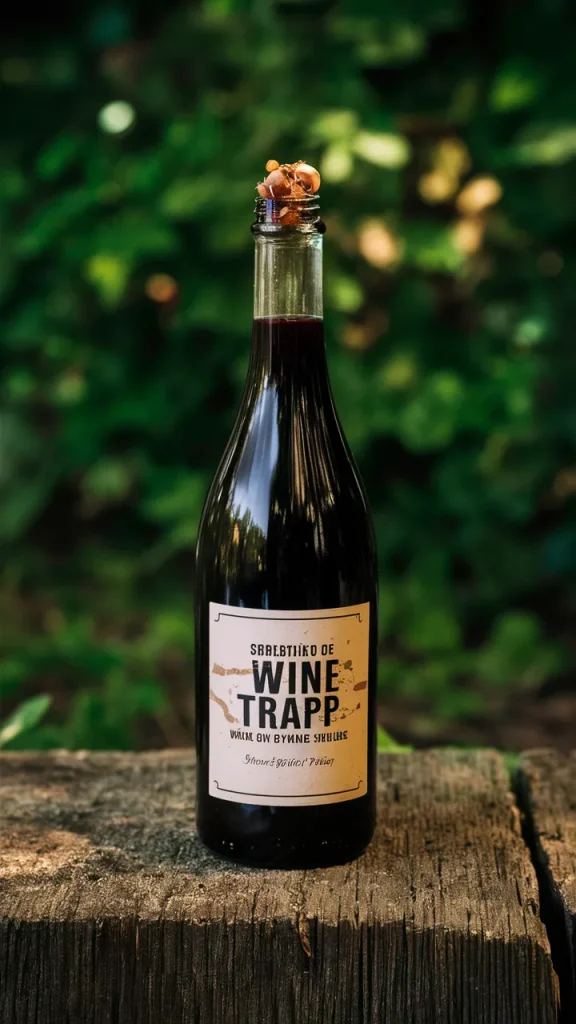
Materials Needed:
- Empty wine bottle
- Leftover wine or fruit juice
Instructions:
Leave a small amount of leftover wine or fruit juice in an empty wine bottle. Place the bottle outdoors where flies are a problem. Flies will be attracted to the sweet, fermented smell and enter the bottle, becoming trapped.
Why It Works:
The narrow neck of the wine bottle makes it difficult for flies to escape once they’ve entered. The fermented aroma is a powerful attractant, ensuring that flies are lured in quickly. This is a simple yet effective way to reuse wine bottles and control flies simultaneously.
7. Dish Soap and Vinegar Trap
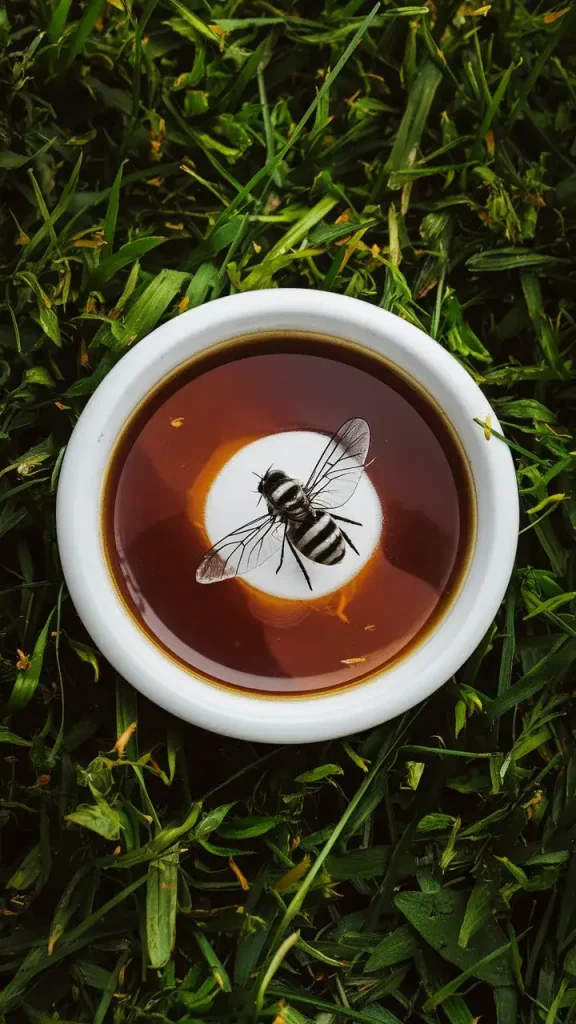
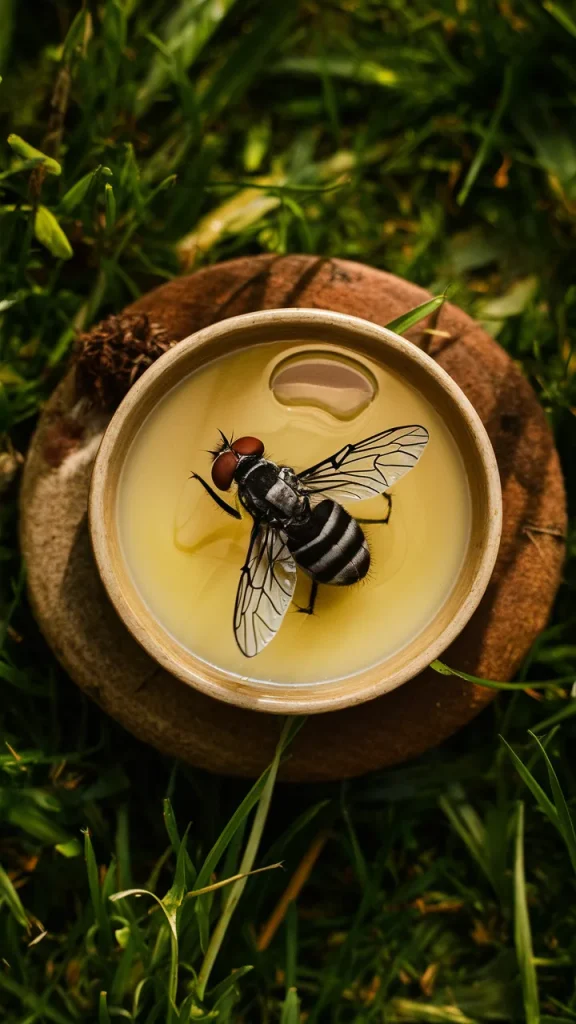
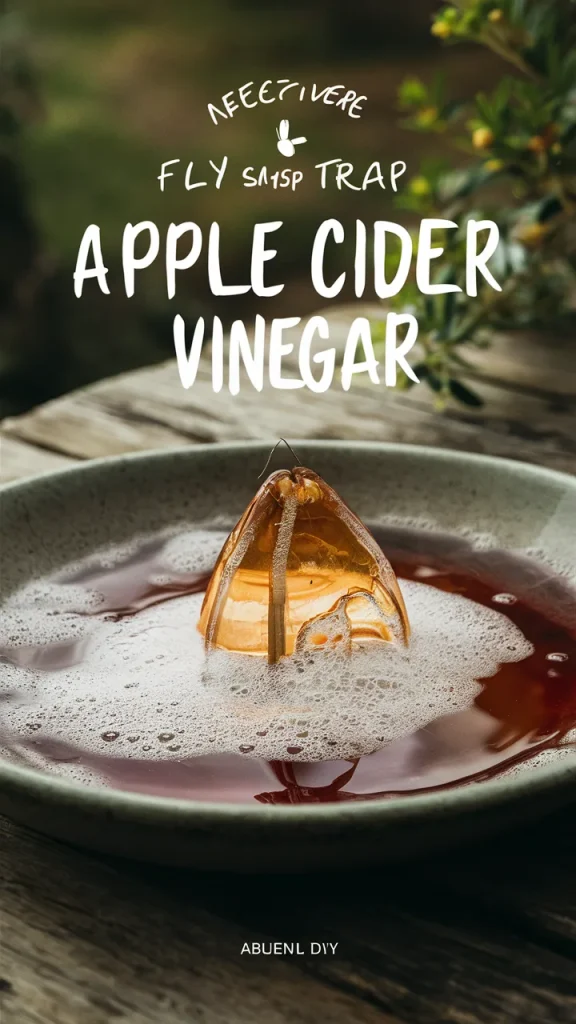
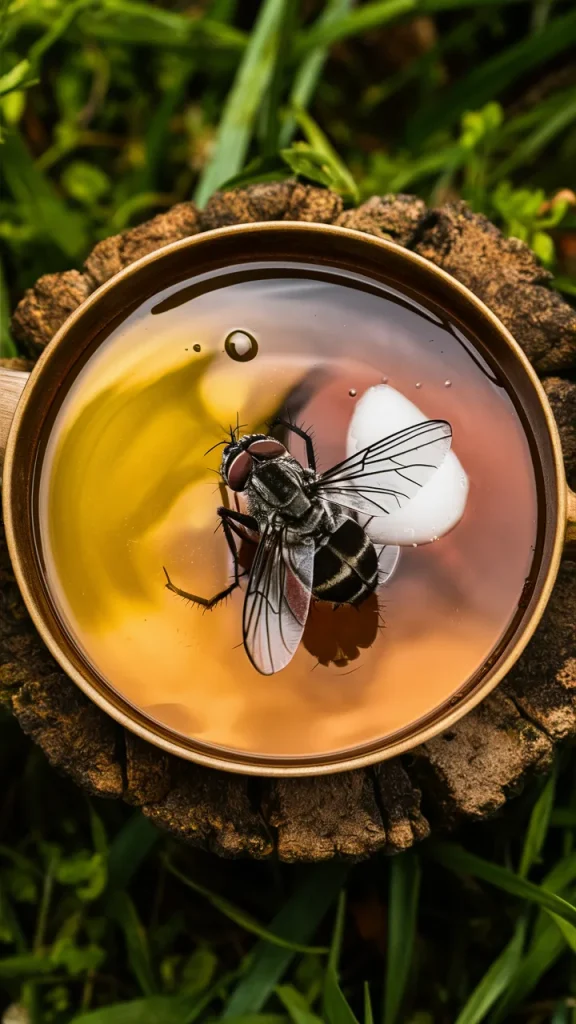
Materials Needed:
- Apple cider vinegar
- Dish soap
- Shallow dish
Instructions:
Pour apple cider vinegar into a shallow dish and add a few drops of dish soap. Place the dish outside where flies are prevalent. The flies will be drawn to the vinegar and the dish soap will reduce the surface tension, causing them to drown.
Why It Works:
The dish soap breaks the surface tension of the vinegar, ensuring that flies cannot simply land and take off. They are instead trapped and drown in the liquid. This trap is easy to set up and highly effective for managing fly populations outdoors.
8. Beer Trap
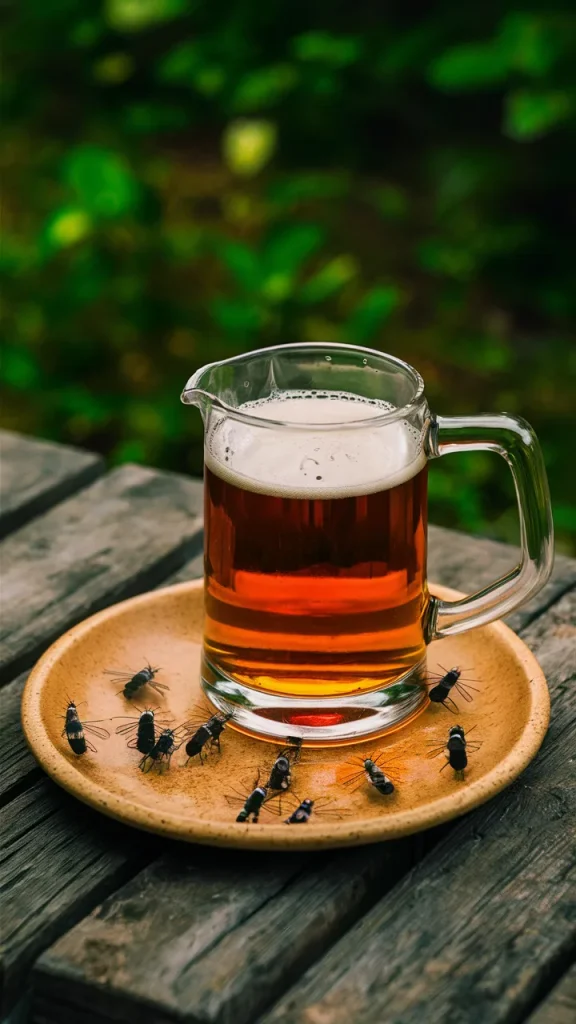

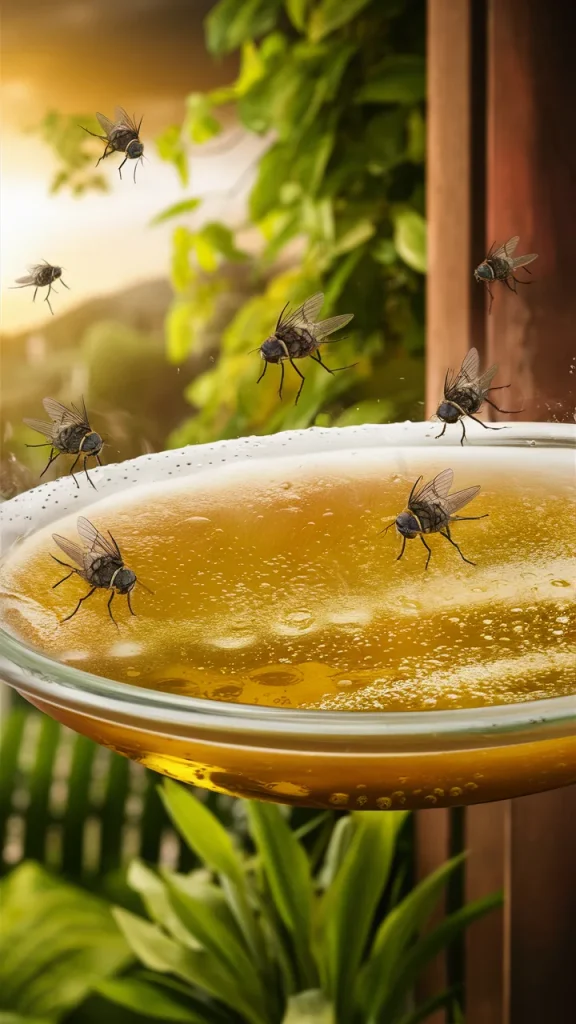
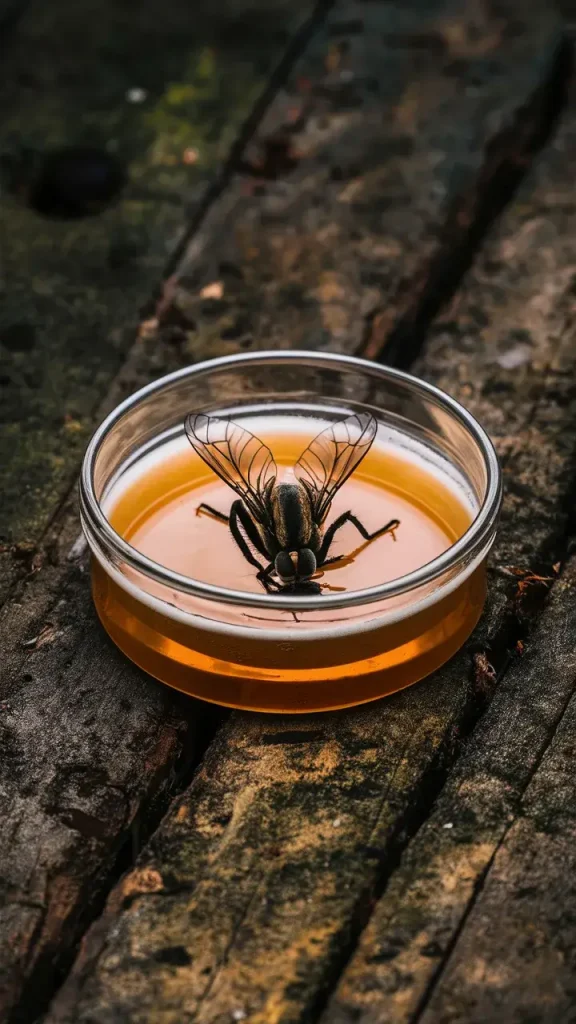
Materials Needed:
- Beer
- Shallow dish
Instructions:
Pour some beer into a shallow dish and place it outside. Flies will be attracted to the beer, enter the dish, and drown.
Why It Works:
Flies are drawn to the yeast and sugar found in beer. The shallow dish design ensures they cannot escape once they land. This is an excellent way to use leftover beer and keep flies at bay in your outdoor space.
9. Water Bag Fly Repellent
Materials Needed:
- Plastic sandwich bag
- Water
- Pennies
- String
Instructions:
Fill a plastic sandwich bag halfway with water and add a few pennies. Seal the bag and hang it near areas where flies are a problem.
Why It Works:
This method is based on the theory that the water and pennies create a prism effect that confuses flies’ vision, deterring them from the area. While it may not trap flies, it effectively keeps them away, making it a popular natural repellent.
10. Basil and Mint Plant Trap
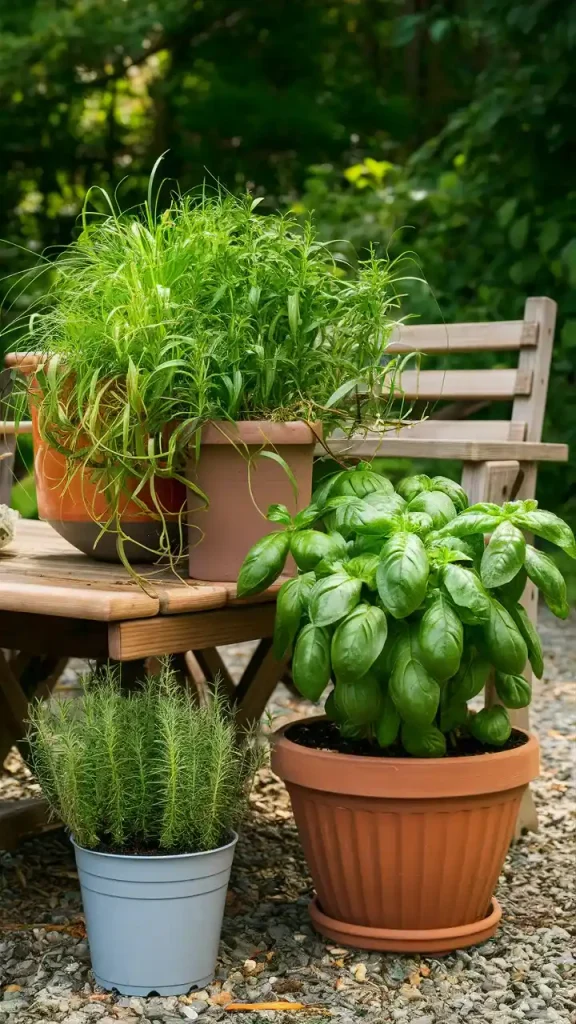
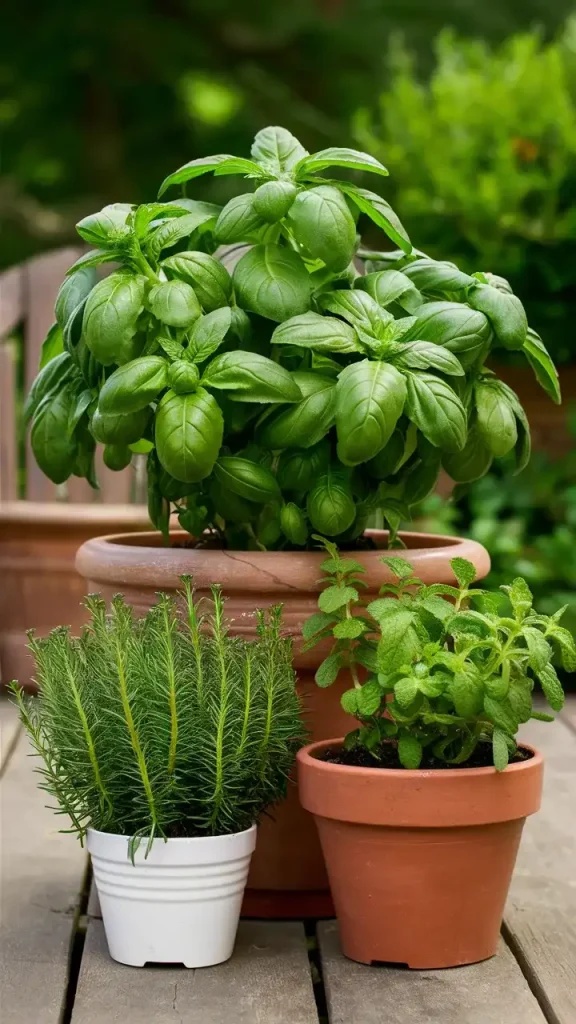
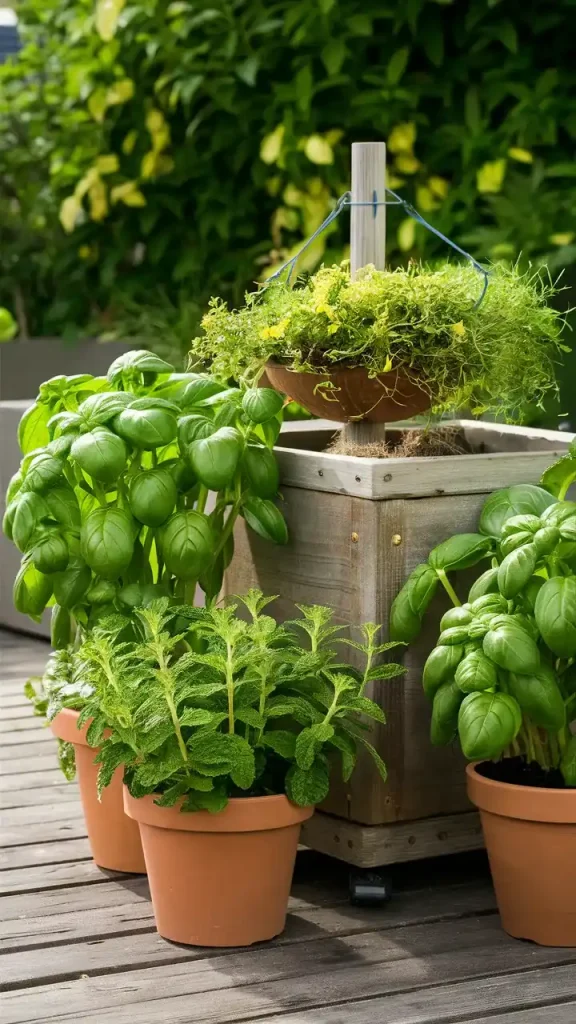
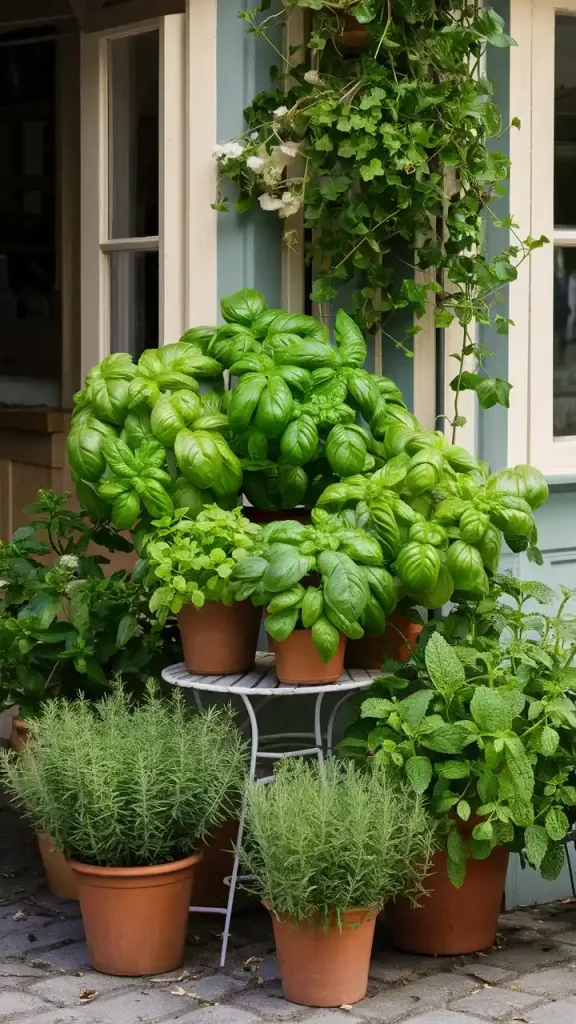
Materials Needed:
- Basil and mint plants
- Plant pots
Instructions:
Plant basil and mint in pots and place them around your outdoor area.
Why It Works:
Basil and mint have strong scents that are natural repellents to flies. By strategically placing these plants around your outdoor space, you can create a barrier that deters flies. Additionally, these herbs are easy to grow and maintain, providing a sustainable solution to your fly problem.
11. Eucalyptus Oil and Cloth Trap
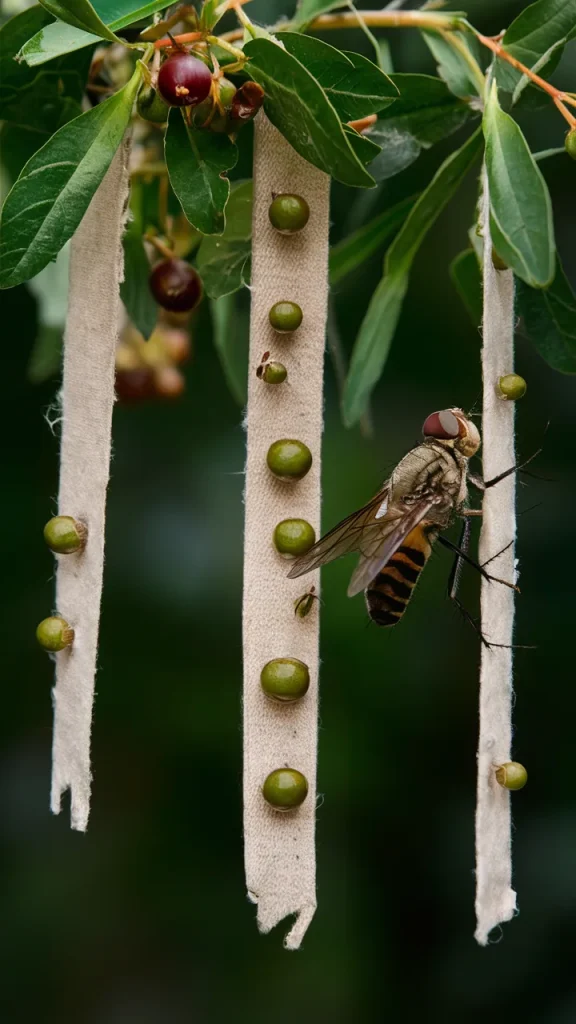
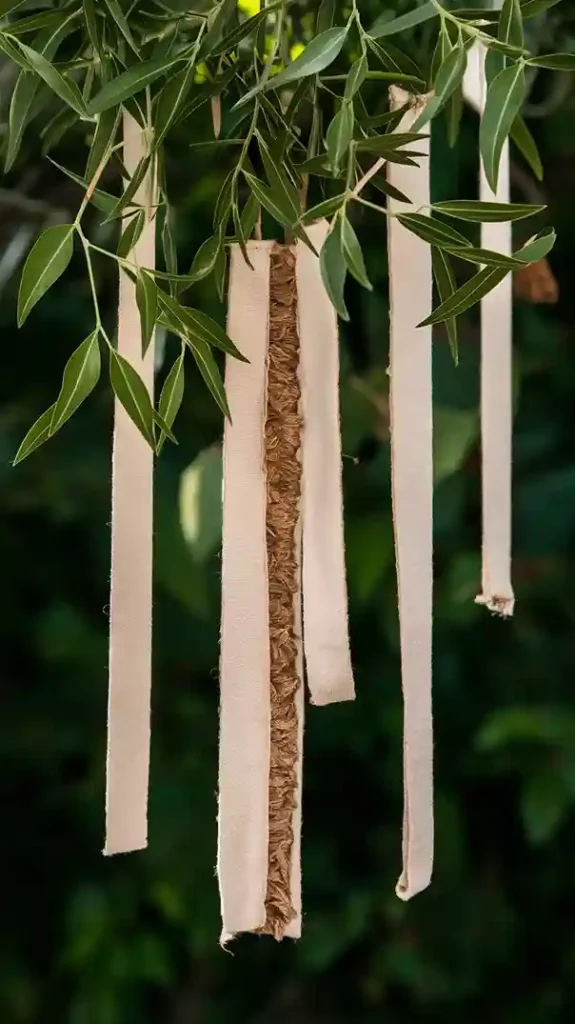
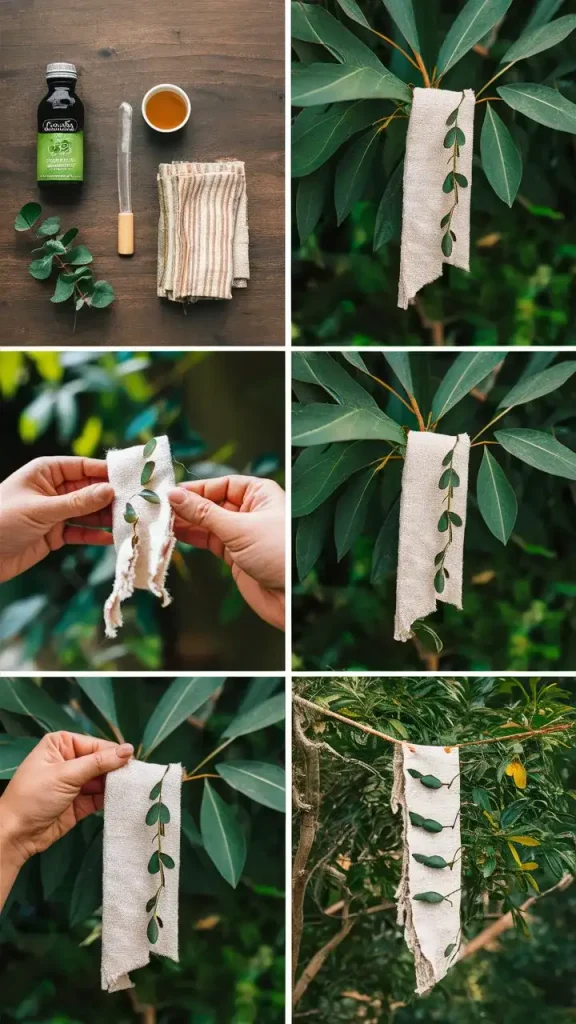
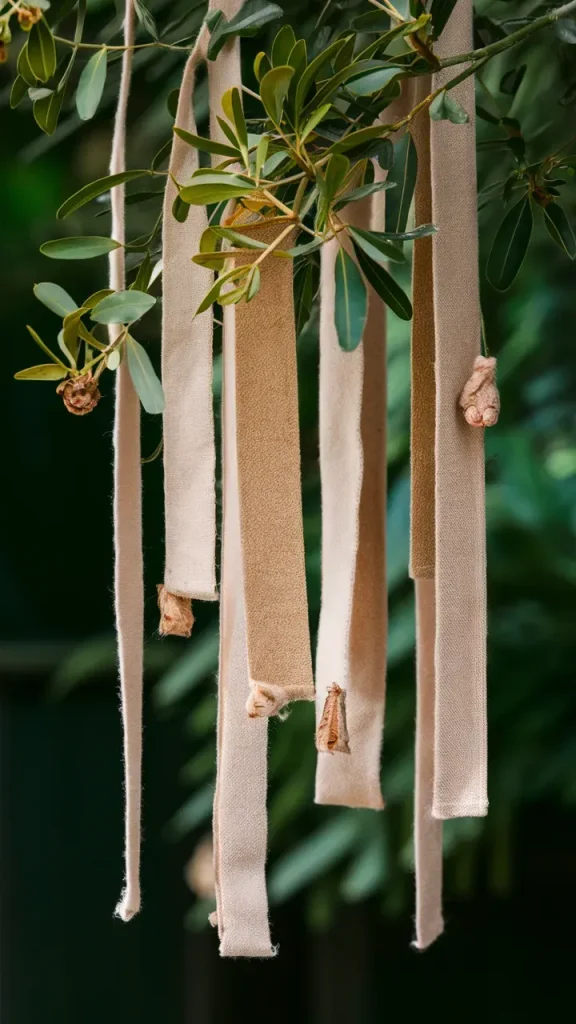
Materials Needed:
- Eucalyptus oil
- Cloth strips
Instructions:
Soak cloth strips in eucalyptus oil and hang them around your outdoor area.
Why It Works:
Eucalyptus oil has a strong fragrance that repels flies. By soaking cloth strips and hanging them around, you create an effective deterrent that keeps flies away from your space. This method is also environmentally friendly and non-toxic.
12. Yeast and Sugar Trap
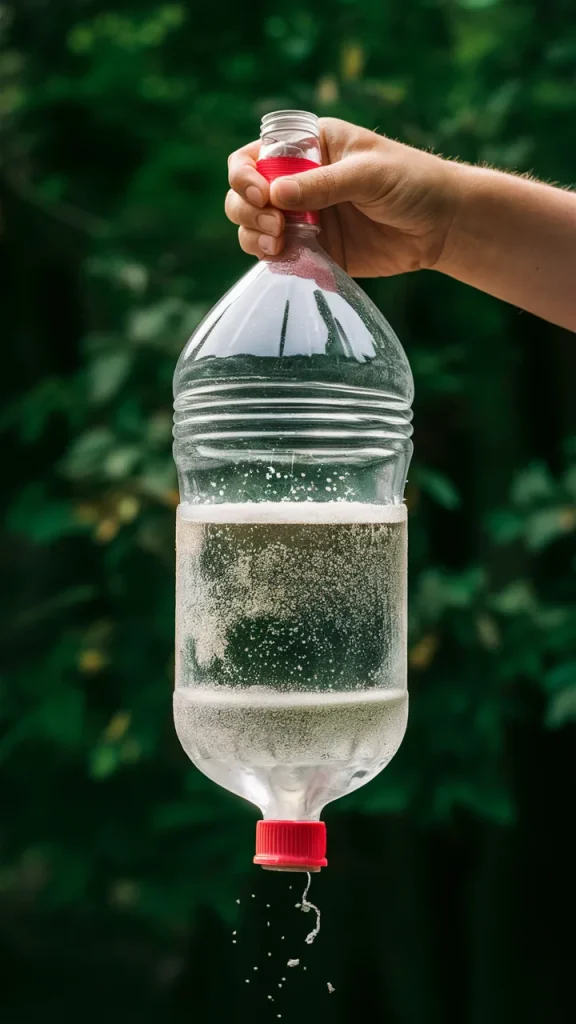
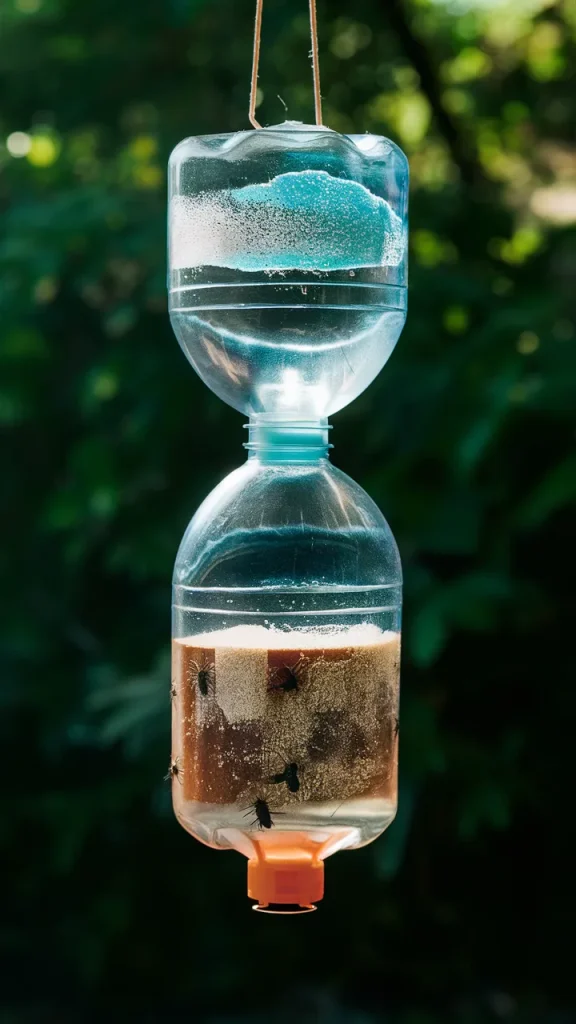
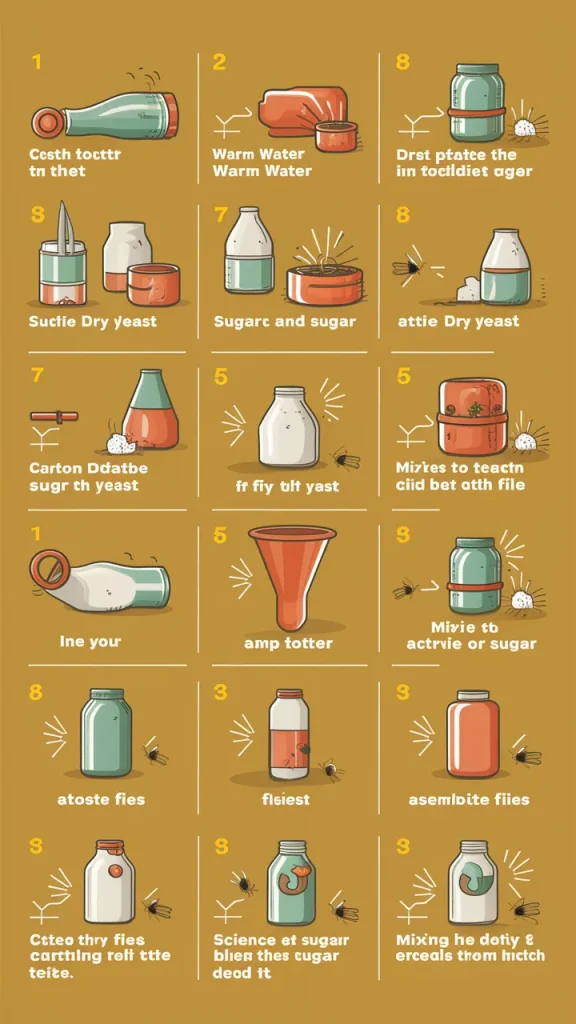
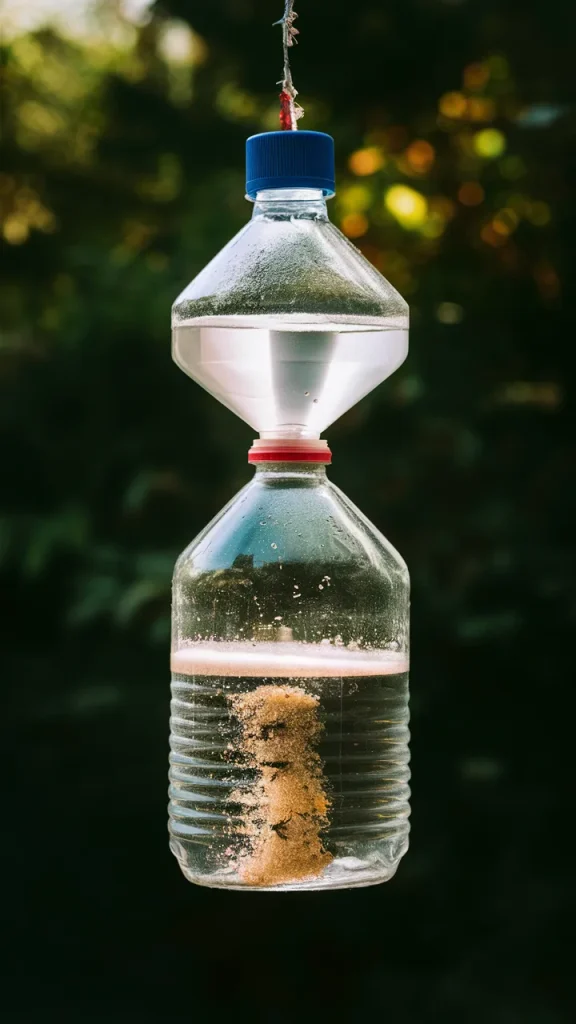
Materials Needed:
- Plastic bottle
- Warm water
- Sugar
- Active dry yeast
Instructions:
Cut a plastic bottle in half and invert the top to create a funnel. Mix warm water, sugar, and active dry yeast in the bottom half of the bottle. Assemble the trap and place it outside.
Why It Works:
The combination of sugar and yeast produces carbon dioxide, which attracts flies. The funnel design ensures that flies can enter but not escape. This trap is particularly effective for catching a large number of flies.
13. Honey and Vinegar Trap
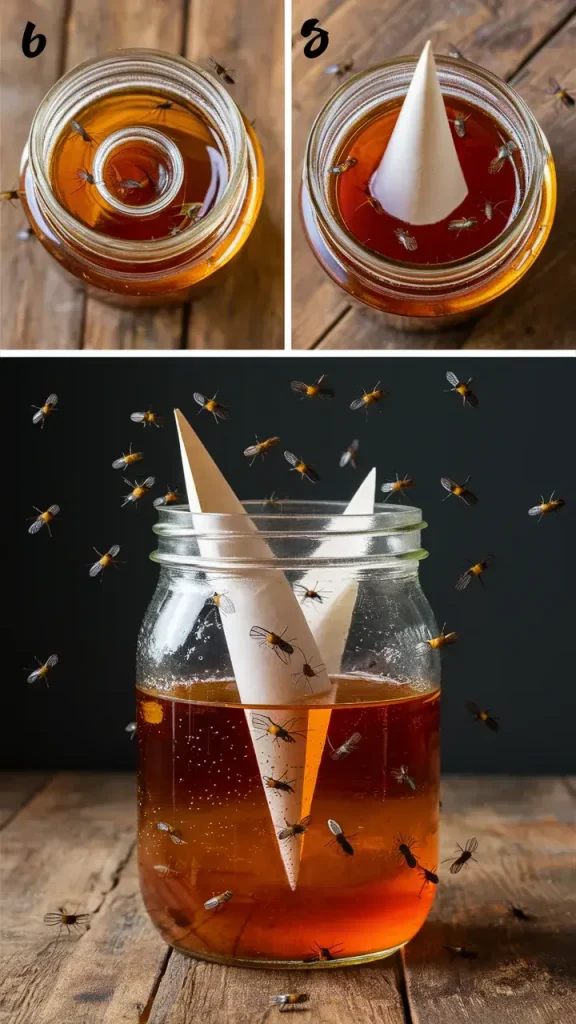
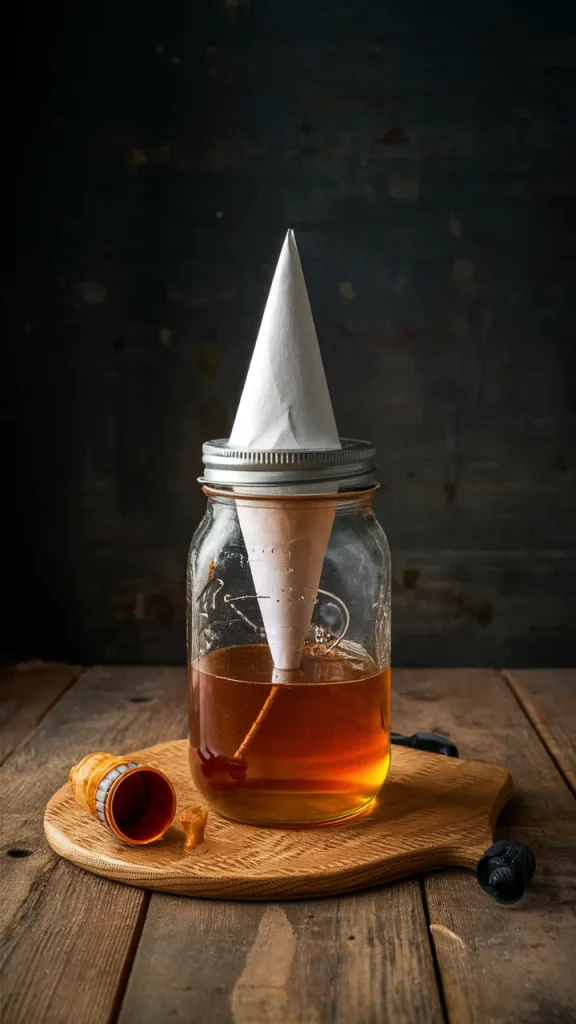
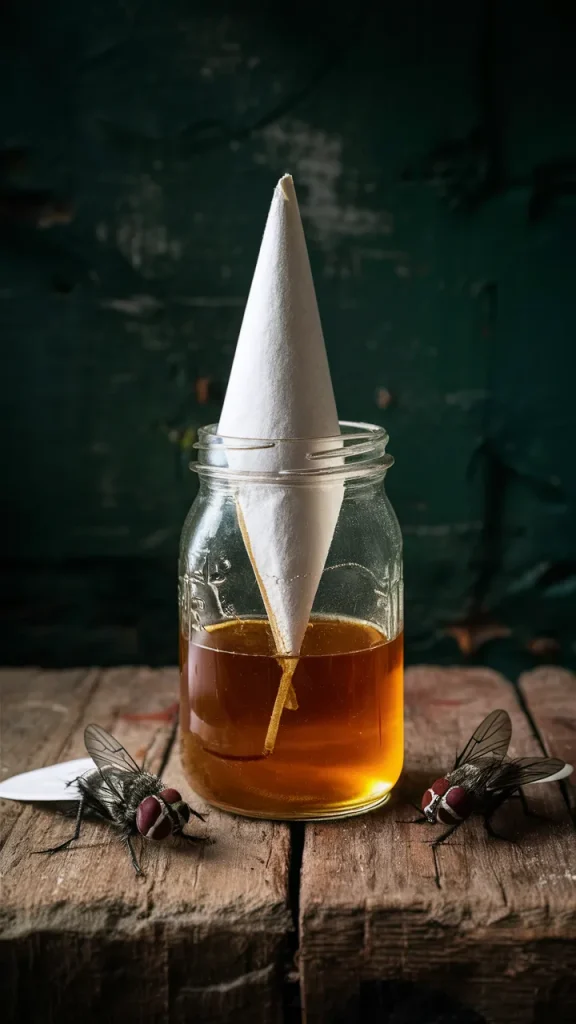
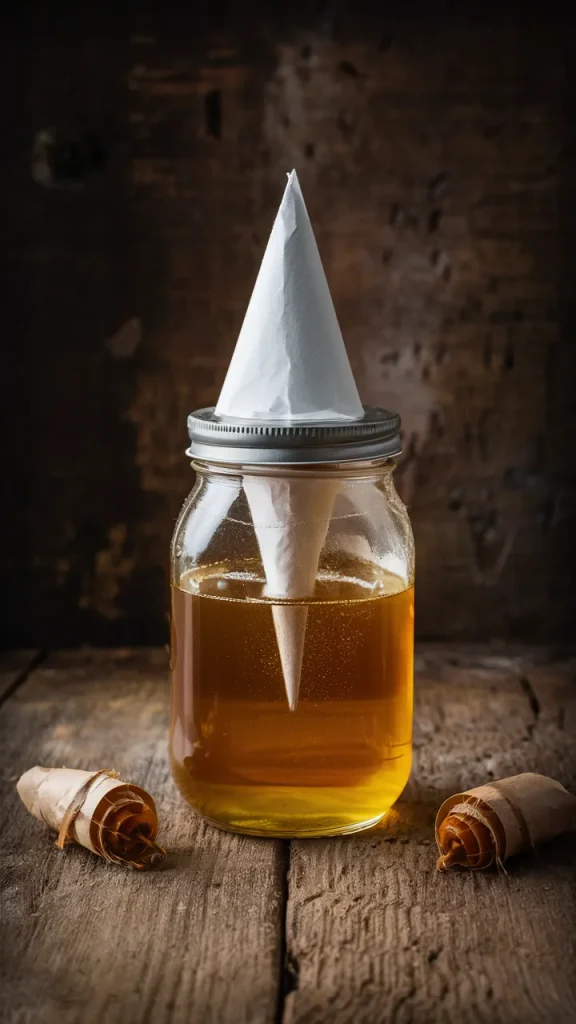
Materials Needed:
- Honey
- Apple cider vinegar
- Paper cone
- Jar
Instructions:
Pour a mixture of honey and apple cider vinegar into a jar. Create a paper cone and place it in the jar, ensuring the tip doesn’t touch the liquid. Flies will be drawn to the mixture and trapped in the jar.
Why It Works:
The sweet scent of honey combined with the tang of vinegar is highly attractive to flies. The paper cone design ensures they cannot escape once inside, making this trap both simple and effective.
14. Citrus and Cloves Trap
Materials Needed:
- Citrus fruits (lemons, oranges)
- Whole cloves
Instructions:
Cut citrus fruits in half and stud them with whole cloves. Place them around your outdoor area.
Why It Works:
The combination of citrus and cloves produces a scent that flies find repellent. This natural method is not only effective but also adds a pleasant aroma to your outdoor space. Plus, it’s a chemical-free way to keep flies at bay.
15. Soda Bottle and Vinegar Trap
Materials Needed:
- Plastic soda bottle
- Apple cider vinegar
- Sugar
- Dish soap
Instructions:
Cut a plastic soda bottle in half and invert the top to create a funnel. Fill the bottom half with a mixture of apple cider vinegar, sugar, and a few drops of dish soap. Assemble the trap and place it outside.
Why It Works:
The vinegar and sugar attract flies, while the dish soap reduces the surface tension, ensuring they drown. The funnel design makes it difficult for them to escape, providing a highly effective fly trap.
16. Bread and Milk Trap
Materials Needed:
- Bread
- Milk
- Bowl
Instructions:
Soak a piece of bread in milk and place it in a bowl. Leave the bowl outside where flies are a problem.
Why It Works:
The combination of milk and bread creates a sweet, fermented smell that attracts flies. Once they land, they often become stuck in the liquid, effectively trapping them. This simple yet effective trap is an excellent way to repurpose leftover bread.
17. Lemon and Dish Soap Trap
Materials Needed:
- Lemon
- Dish soap
- Water
- Shallow dish
Instructions:
Squeeze lemon juice into a shallow dish and add water and a few drops of dish soap. Place the dish outside where flies are prevalent.
Why It Works:
The citrus scent of lemon juice attracts flies, while the dish soap reduces the surface tension, causing them to drown. This trap is easy to set up and uses common household ingredients, making it a convenient solution for outdoor fly problems.
Conclusion
Managing flies in your outdoor space doesn’t have to be a daunting task. With these 17 DIY fly traps, you can create effective, natural solutions to keep your area fly-free. Each trap utilizes common household items and simple ingredients, making them easy to assemble and highly cost-effective. By implementing these strategies, you can enjoy your outdoor environment without the constant annoyance of flies.
